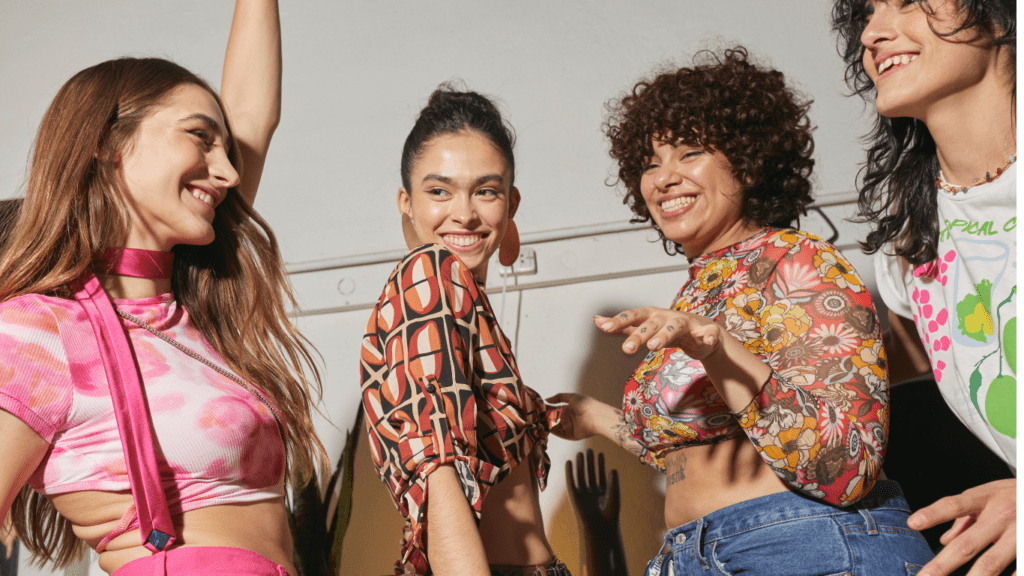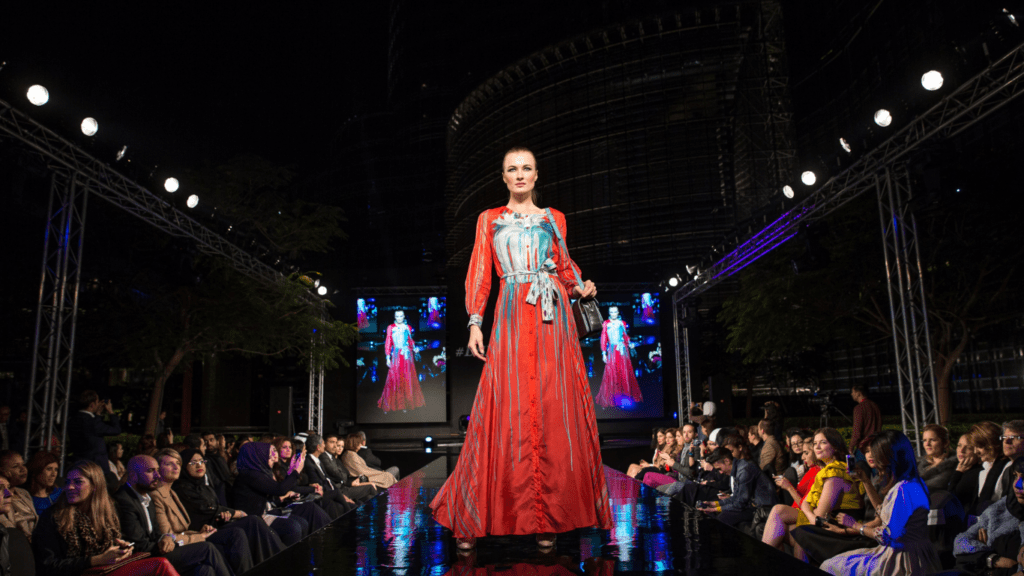Understanding AI in Fashion Design
AI plays a crucial role in evolving fashion design. From predicting trends to generating innovative designs, AI’s influence is vast and growing.
Key Technologies and Algorithms
AI in fashion uses various technologies and algorithms. Neural networks analyze patterns and predict trends from large datasets. For example, Convolutional Neural Networks (CNNs) identify visual patterns in images, aiding in fabric and color selection.
Machine Learning (ML) algorithms customize and optimize designs based on consumer preferences, providing tailored recommendations. Generative Adversarial Networks (GANs) create unique designs by learning from data inputs, inspiring novel fashion pieces. Natural Language Processing (NLP) helps understand consumer feedback and reviews, improving future collections.
Historical Evolution
AI’s integration into fashion design has a rich history. Initially, designers used basic software tools for simple tasks. During the 2010s, AI began analyzing consumer data to predict trends. Machine Learning then enabled mass customization, allowing brands to tailor designs. In recent years, GANs have revolutionized creativity by generating new aesthetic concepts. Notably, in 2018, a GAN-created dress made headlines for its unique design, marking a significant milestone. AI’s evolution in fashion highlights its transformative power over time, reshaping the industry’s landscape.
AI Applications in Fashion Design
Artificial intelligence significantly impacts the design process within the fashion industry. Key areas include design process automation, fabric and material innovation, and personalization and customization.
Design Process Automation
AI streamlines numerous aspects of the fashion design process. Algorithms create initial design drafts, saving time and allowing designers to focus on creative aspects. Neural networks analyze past designs, identifying successful elements, and suggesting new combinations.
By using Convolutional Neural Networks (CNNs), AI evaluates sketches, converting them into digital patterns. Machine Learning (ML) algorithms predict fabric usage, reducing waste and optimizing material costs. Generative Adversarial Networks (GANs) produce unique designs by merging different styles, enabling innovative collections.
Fabric and Material Innovation
AI revolutionizes fabric and material development. Machine learning models test material properties, accelerating the discovery of new textiles. AI algorithms analyze large datasets to uncover sustainable alternatives, reducing the environmental impact of fashion production. Predictive models forecast material longevity, aiding in the creation of durable products. AI facilitates smart textiles, embedding technology into fabrics for added functionality, enhancing customer experiences, and broadening design possibilities.
Personalization and Customization
AI enables personalized fashion experiences. Natural Language Processing (NLP) interprets customer feedback, tailoring design elements to individual preferences.
Recommendation engines suggest styles based on browsing behavior, ensuring relevance and engagement. AI-driven customization platforms allow customers to modify designs, offering unique, made-to-order pieces. By analyzing purchasing patterns, AI identifies trends, enabling designers to create collections that resonate with target audiences, enhancing overall satisfaction and loyalty.
AI in Fashion Retail
AI is revolutionizing fashion retail, enhancing efficiency and customer satisfaction. It uses data-driven insights to transform retail operations and customer interactions.
Trend Forecasting
AI improves trend forecasting by analyzing vast datasets. Algorithms assess social media trends, search queries, and sales data to predict upcoming fashion styles. Brands like Zara leverage these insights to stay ahead of the competition.
Inventory Management
Efficient inventory management benefits from AI’s data processing capabilities. Machine learning models predict product demand, helping retailers optimize stock levels and reduce overstock or stockouts. H&M uses AI to determine optimal stock replenishment.
Customer Experience Enhancement
AI enhances customer experiences through personalized recommendations and virtual assistants. Retailers like Amazon employ AI to suggest products based on browsing history and preferences. Additionally, AI-driven chatbots handle customer inquiries, providing instant support.
Integrating AI in fashion retail streamlines operations and elevates customer satisfaction.
Case Studies of AI in Fashion Industry
AI’s impact in the fashion industry is evident through various case studies demonstrating success stories and challenges.
Success Stories
Several fashion brands have successfully integrated AI into their operations.
- Stitch Fix uses AI to provide personalized styling. Their algorithm analyzes customer feedback, purchase history, and preferences to curate individualized outfits.
- Tommy Hilfiger collaborated with IBM and the Fashion Institute of Technology to leverage AI in the design process. This partnership led to the creation of a data-driven “Reimagine Retail” project that helped predict trends, optimize designs, and improve production efficiency.
- H&M utilizes AI for supply chain management. Their AI system predicts demand more accurately, ensuring optimal stock levels and reducing overproduction. By analyzing sales patterns and customer data, H&M can better anticipate market needs and respond swiftly to changes.
- Zara employs AI-driven strategic store placement and inventory replenishment, drastically reducing restocking times and improving store-level sales performance.
Challenges and Limitations
Implementing AI in fashion comes with challenges.
- One key issue is the high cost of AI technology. Large investments are needed for AI systems, which can be prohibitive for smaller brands.
- Another challenge is data quality and privacy. AI performance relies heavily on accurate, high-quality data, but gathering and maintaining such data presents logistical and ethical concerns. Brands must navigate privacy laws and ensure data security to maintain customer trust.
- Moreover, AI creativity can be limited. While AI can generate designs based on patterns and data, it lacks the human touch that infuses fashion with culture and emotion. Balancing AI efficiency with human creativity is a complex challenge.
- Lastly, there’s the risk of widespread adoption leading to a lack of uniqueness. If multiple brands use similar AI tools, fashion could become homogenized, losing the distinctive elements that make each brand unique.
Future Prospects of AI in Fashion Design and Retail

AI continues to evolve, offering potential breakthroughs in fashion design and retail. By improving design accuracy and enhancing customer personalization, these technologies shape the industry’s future.
Enhanced Customization
AI algorithms precisely measure customer preferences, enabling better product recommendations. Services like virtual fitting rooms use AI to provide exact sizing and fit, boosting customer satisfaction and reducing return rates.
Predictive Analytics
Advanced AI systems analyze trends and predict fashion movements. Brands utilize these insights to create styles that align with customer expectations. Companies like Nike and Adidas leverage predictive models to stay ahead of trends, ensuring popular items are always in stock.
Sustainable Practices
AI aids in creating sustainable fashion by minimizing waste and optimizing resource use. Predictive analytics help brands forecast product demand more accurately, preventing overproduction. AI-powered tools analyze supply chains to highlight eco-friendly practices.
Intelligent Design Tools
Designers use AI-powered software for intricate pattern creation and fabric utilization. Algorithms suggest design modifications to improve aesthetics while maintaining cost-effectiveness. AI assists in automating repetitive tasks, allowing designers to focus on innovative concepts.
Consumer Experience
AI enhances consumer interaction with brands. Chatbots provide immediate customer support, and AI-driven apps offer personalized shopping experiences. Retailers utilize AI to analyze shopper behavior, tailoring marketing strategies to individual preferences.
Retail Automation
AI streamlines retail operations through automation. Inventory management systems automatically restock based on real-time data. Self-checkout systems in stores reduce wait times and improve customer convenience.
Innovations in AR/VR
AI integrates with augmented reality (AR) and virtual reality (VR) to create immersive shopping experiences. Virtual try-ons and interactive showrooms enhance the online shopping experience, bridging the gap between digital and physical retail spaces.
Ethical Considerations
AI’s rise includes ethical challenges. Transparent AI systems ensure unbiased recommendations and fair practices. Brands must address privacy concerns and ensure responsible AI use.
Future Research
Ongoing research strives to enhance AI’s capabilities in fashion. Efforts focus on improving AI’s ability to understand nuanced human creativity and cultural fashion significance. Collaboration between technologists and fashion experts drives these innovations.
Future AI advancements promise transformative shifts in fashion design and retail, pushing industry boundaries while ensuring innovation aligns with consumer needs.



 Luxury Travel & Lifestyle Contributor
Rose Boucher brings her love for glamorous travel destinations and luxury living to Glam World Walk. As a lifestyle writer, Rose captures the essence of exotic locations and exclusive experiences, offering readers a taste of the world’s most luxurious getaways. Her expertise in finding hidden gems, coupled with a deep understanding of fashion and culture, adds a unique flair to the site’s content, making her a trusted voice for those seeking elegance in every adventure.
Luxury Travel & Lifestyle Contributor
Rose Boucher brings her love for glamorous travel destinations and luxury living to Glam World Walk. As a lifestyle writer, Rose captures the essence of exotic locations and exclusive experiences, offering readers a taste of the world’s most luxurious getaways. Her expertise in finding hidden gems, coupled with a deep understanding of fashion and culture, adds a unique flair to the site’s content, making her a trusted voice for those seeking elegance in every adventure.
